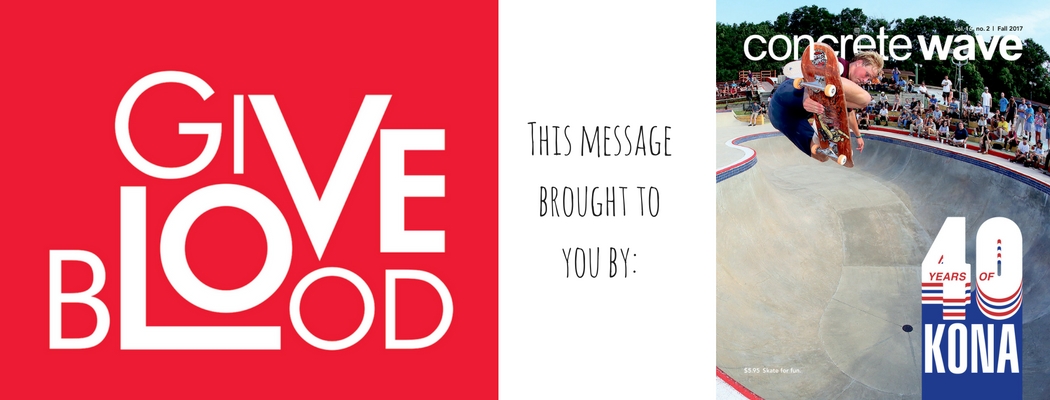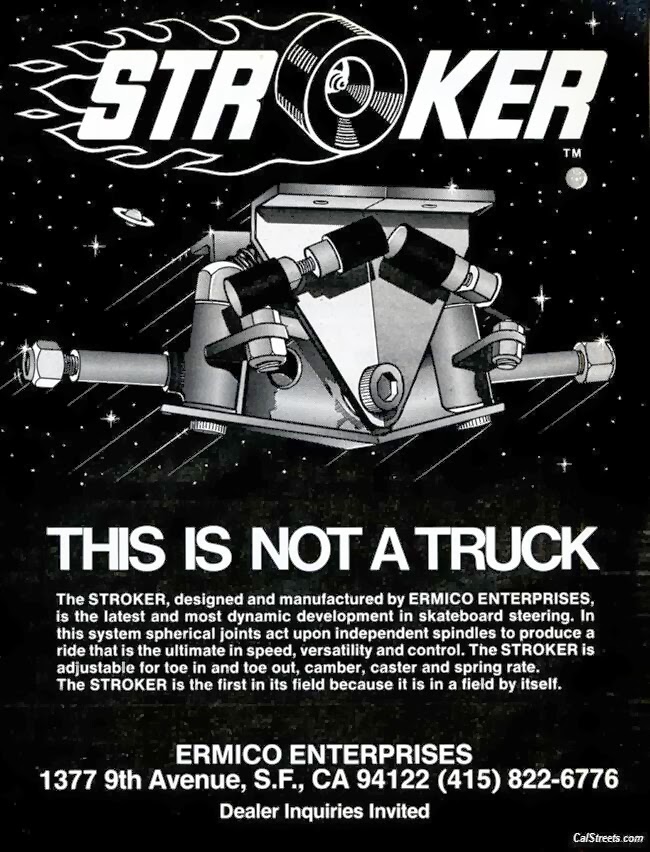


Let me begin this editorial with a disclaimer. As those of you who’ve read my usual section on this website will be aware, I’m a freestyle skateboarder. If the industry and skateboarding’s “mainstream media” are to be believed, I’m a member of an extinct species. My culture is dead – murdered in the early 1990s – and my creative output in skateboarding is irrelevant as a result.
And yet, like many freestylers, I work in “the industry”; not just for a selection of somewhat eclectic, renegade publications, but also for a trio of similarly archaic/iconic brands that have weathered the storm since the early ’80s in very different ways. And it’s for this reason, because of this connection, that I found myself at ISPO in Munich at the start of February.
Now, let me make one thing abundantly clear: I’m a very cynical man. I don’t like bullshit, and I don’t like self-promotion. As such, business-speak gets my heckles up and makes me somewhat weary of whatever else is coming out of the mouth in front of me. As such, I tend to stay away from trade shows as much as is humanly possible. I don’t mind going to them as a performer and doing freestyle demos, but actually having to engage with people who are trying to hawk their wares – or, worse, having to hawk wares myself – just tires me out.
Generally speaking, skateboarding trade shows I’ve been to in the past tend to be one big circle jerk of awesomeness. A circle jerk that I, as a freestyler, am not really invited to join in on. That’s okay, to be honest. Sitting on the outside and watching companies pat each other on the back about how damned marketable they are just makes me more jaded about the whole bloody thing.
In the mid-2000s, I actively wanted to be involved. I was convinced in the worth of what I was doing in the basketball courts, parking lots and streets of the world. I saw how excited people became when they saw this thing that had been actively kept away from them. I saw how happy people were when they suddenly realised they weren’t the only one who liked doing “that Rodney Mullen stuff”. I saw how stoked older freestylers were when they learned that not only were people still doing freestyle, but that it was still possible to get sub-8” boards and wheels that covered the axle nut.
And yet the “industry”, by and large, closed its doors to me. Not just me, but to my friends and comrades worldwide. Company owners and magazine editors, some former freestylers themselves, said they couldn’t support freestyle. They liked it, they liked what I and my friends were doing, but they couldn’t publicly support freestyle. It’d alienate the street skaters. Even the freestylers who had some sort of sponsorship deal weren’t mentioned publicly. This still happens today; a number of big-name companies have informal deals with an array of freestylers worldwide, some of whom are former world champions. None of these get any sort of publicity from any company unless they have some sort of “cross-over appeal” for the street skaters (see: Kilian Martin, Andy Anderson).
And this same attitude shows up at every trade show I’ve ever been to. The core industry expresses both its delight in seeing freestyle and its complete unwillingness to publicly associate with it.
To those skaters who ride a deck longer than 36”, all of the above should be a familiar story. Longboarding now has its own industry, and to some degree, its own section in trade shows worldwide. Some elements of the “core” industry have even tried to insert themselves into longboarding in one way or another – whether it’s through producing longboards through their own brand, creating a whole new brand they can keep at arms’ length, or by buying up existing brands. The horse had already bolted, but they were desperate to try to get a ride.
ISPO, however, brings to mind different questions – questions, in part, related to where exactly this whole culture is going to be in five years’ time.
I’ve never done ISPO before. I’ve never been needed out there. Generally, when I’m at work, I’m the tech guy – writing copy, editing websites, fixing the stock control systems, etc. – but I know of ISPO by reputation. As their website states, it’s “the world’s largest multi-segment trade fair for the sports business” – a phrase which, in itself, makes me want to vomit. But certainly, it supposedly plays host to a good amount of business in “our sector”.
And this year it seemed mostly empty.
The “Longboard Village” was an entertaining area, with folks from Madrid, Seismic and Landyachtz mixing with some smaller brands like King Lui, Kebbek and the beautifully hand-carved Legende Longboards, who were actually carving a board out of a block of wood during the show. Also of note were Curfboard, who have possibly the best surf-style truck I’ve ever ridden (even if it is so over-engineered that it reminds me somewhat of the Stroker trucks from the late ’70s). As the show closed every night, the bar opened, the music started playing, and everyone in the longboard embassy started (by which I mean continued) drinking, chatting, and riding around the trade show hall on various wheeled contraptions, including electric boards, dancing boards, go-karts and surf skates. Honestly, it was some of the most pure, unadulterated fun I’ve had in skateboarding for quite some time. For those brief few hours after work had finished, it didn’t matter what you were riding, what clothes you were wearing or how your bloody shoelaces were tied – as long as you were having fun, it was all good. All accepted.

Alexandre Martin of Legende Longboards, photo by Michael Brooke of Concrete Wave Magazine
The Curfboard video short, from Curfboard’s website. I was thinking that Tony might have been just a little bit full of shit with that “Stroker” comparison, so I had to check it out for myself. Turns out, he was pretty spot-on. Well, I’ll be damned. Ain’t that sumthin’, right there.

This one’s for the kids that need the quick history lesson: Stroker Trucks ad from the October 1976 issue of Skateboarder Magazine. Today, Ermico manufactures trucks for Independent, Thunder, and Venture. Vintage ad from CalStreets.com.
But, as far as positive experiences of ISPO goes, that was about it. Footfall through the dedicated “urban sports” area was minimal for all four days of the event. There were lots of people taking the opportunity to ride around on every novelty product available during the day (and yes, that included scooters, including electric and pedal-powered versions. And yes, pedal scooters are apparently a thing, and yes, they’re as ridiculous as they sound). But where were the buyers? Where was the business? Even the more low-end, entry level brands and well-known cruiser brands seemed to be twiddling their thumbs for a good bulk of the show, and scooter brands (which, if you’d believe some folks, should be where the money is) seemed to be facing a similar situation.
Don’t get me wrong – I aware of the fact that judging the state of the industry by one poorly-attended trade show is a fool’s errand. However, it certainly seems symptomatic of what I’m seeing in the street, in the boarded-up skate shop windows and in the trade magazines: I suspect we have a looming problem that some folks are unwilling to acknowledge and others are unable to find solutions for. Our esteemed editor is placing the finger on the assisted death of the local skateshop, and I think there’s definitely something in that: my local “skateshop” closed down a few years back, and the local skate scene died shortly after. However, I suspect the problem is more endemic than that, and that maybe the closure of skateshops is more of a symptom than a disease.
“Skateboarding”, as a business, has always gone in boom-and-bust cycles – due largely to a combination of narrow-minded marketing, cultural conservatism and the outright pillaging of the culture by vampiric businessmen with no concern for the welfare of the activity they are bleeding dry. I feel that if the boom in interest in longboarding and cruisers had been handled more carefully, this cycle could, perhaps, have been broken. Now I fear that maybe we have missed our chance.
Of course, skateboarding as an activity will always survive. It’s the cockroach of the “urban sports” world (and that phrase makes bile rise to my throat every time I have to type it); no matter how much it gets raped and pillaged, it’ll always come back in one form or another – yet the same mistakes always seem to be made. As Lew’s think-piece mentioned, we still have real issues with inclusivity and harassment of women. We still have a culture that happily accepts entire sections of it to be marginalised and ostracised because they don’t fit a marketing scheme. And where is that getting us? The same damn mistakes. The same slumps. The same burn out.
You can’t create a monoculture without it being subject to massive collapse, and it’s increasingly starting to feel that this is what we’re facing again. The skateshops are the canary in the coal mine. It’s up to us – the skaters, the writers, the goddamned media – to do something to stop the whole thing from caving in over our heads.
I leave you with this, dear reader. I hope most of you will already know this scene; it was only as I was halfway through writing this diatribe that I realised I was effectively channeling Howard Beale. Maybe he sums it up better than I ever could:
Things have got to change. But first, you’ve got to get mad. You’ve got to say, “I’m as mad as hell, and I’m not gonna take this anymore!”

